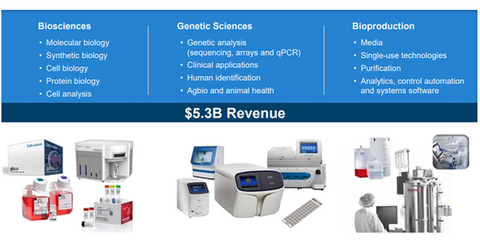Thermo Fisher Scientific Accelerates Its Semiconductor Sequencing
On June 29, 2017, Thermo Fisher Scientific (TMO) announced the addition of three new products to its semiconductor failure analysis workflows portfolio.
July 12 2017, Updated 5:35 p.m. ET

Three new products
On June 29, 2017, Thermo Fisher Scientific (TMO) announced the addition of three new products to its semiconductor failure analysis workflows portfolio.
The company demonstrated these products at the 24th International Symposium on the Physical and Failure Analysis of Integrated Circuits (or IPFA) held in China from July 4, 2017, to July 7, 2017. The products are part of Thermo Fisher Scientific’s Life Sciences Solutions segment.
Some of TMO’s other major competitors include Agilent Technologies (A), PerkinElmer (PKI), and some privately held companies such as DNA Electronics and Genia Corporation.
TMO stock rose 0.11% on June 29, compared to its closing price on the previous day. The Health Care Select Sector SPDR ETF (XLV) has ~2.3% of its total holdings in TMO.
Product details
The three new products that TMO announced were as follows:
- New Helios G4 Plasma FIB (focused ion beam) system — a dual beam microscope that deprocesses and provides ultra-high-resolution SEM (scanning electron microscope) analysis on semiconductor devices
- New flexProber system – identifies and locate faults in semiconductor wafers both at the interconnect and the transistor levels
- New Themis S transmission electron microscope (or TEM) – provides high-throughput chemical analysis and atomic-level resolution imaging on semiconductor devices
Comments from management
According to Rob Krueger, vice president and general manager of semiconductors at Thermo Fisher Scientific, “The semiconductor market continues to evolve at a fast pace, with strong growth in the memory, foundry, internet of things [IoT], advanced packaging and display markets. This growth has increased the need for fast, high-quality electrical and physical failure analysis. These products add new capabilities and increased flexibility to our existing portfolio of failure analysis solutions.”
